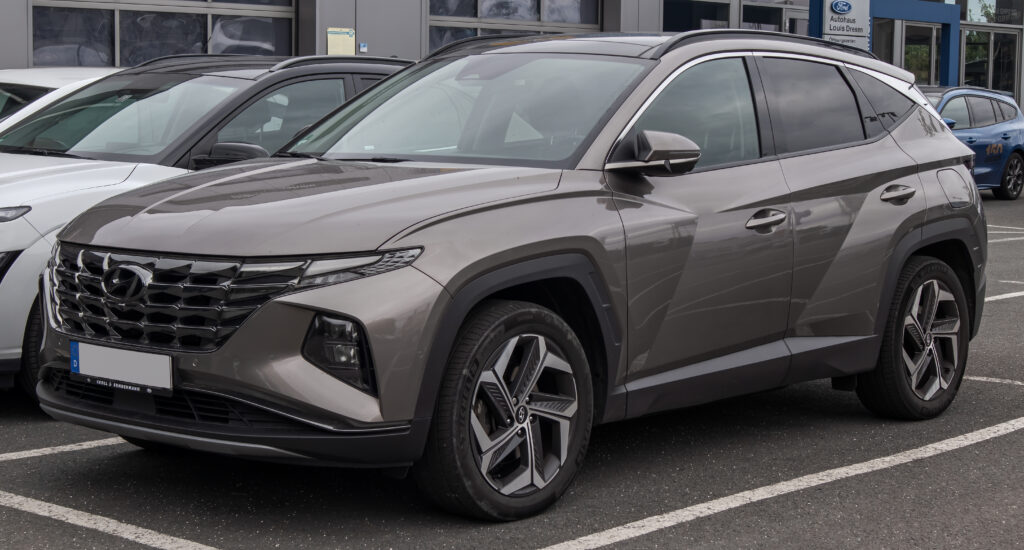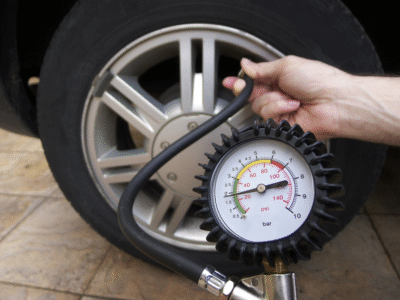
Hyundai Tucson Oil Capacity: Complete Guide for Every Engine

When it comes to maintaining your Hyundai Tucson, one of the most critical yet frequently overlooked aspects is engine oil capacity. It’s the heart of your SUV’s health — too little oil, and your engine gasps for lubrication; too much, and you risk internal pressure that can damage seals and gaskets. In this comprehensive guide, we’ll break down Hyundai Tucson oil capacities by model year, engine type, and generation. We’ll also cover oil grades, DIY oil change steps, and some insider tips you won’t find in the owner’s manual.
- Understanding Why Oil Capacity Matters
- Quick Reference: Hyundai Tucson Oil Capacity by Year
- First Generation (2004–2009)
- Second Generation (2010–2015)
- Third Generation (2016–2020)
- Fourth Generation (2021–Present)
- Hybrid & Plug-in Hybrid Oil Capacities
- Diesel Variants: Oil Capacity and Recommendations
- Recommended Oil Types for Tucson Engines
- How to Check Your Engine Oil Properly
- How to Perform a Hyundai Tucson Oil Change
- Oil Filter Information and Compatibility
- Oil Change Intervals and Maintenance Tips
- Common Oil-Related Issues in Tucson Engines
- Best Practices to Extend Engine Life
- Conclusion
- FAQs
Understanding Why Oil Capacity Matters
Engine oil is the bloodstream of your Tucson’s heart. It lubricates, cools, and cleans critical components. Without the right oil capacity, your engine either starves or drowns — both situations spell trouble.
Here’s why correct oil capacity is crucial:
- Too Little Oil: Causes friction, overheating, and premature wear.
- Too Much Oil: Leads to foaming, pressure buildup, and possible gasket leaks.
- Just Right: Ensures smooth operation, optimal fuel economy, and long-term reliability.
Think of your engine oil like blood pressure — balance is everything.
Quick Reference: Hyundai Tucson Oil Capacity by Year
| Model Year | Engine Type | Oil Capacity (with Filter) | Oil Grade |
|---|---|---|---|
| 2004–2009 | 2.0L I4 (Gas) | 4.2 quarts (4.0 L) | 5W-30 |
| 2004–2009 | 2.7L V6 | 5.5 quarts (5.2 L) | 5W-30 |
| 2010–2015 | 2.0L I4 | 4.2 quarts (4.0 L) | 5W-20 |
| 2010–2015 | 2.4L I4 | 4.6 quarts (4.4 L) | 5W-20 |
| 2016–2020 | 2.0L I4 | 4.3 quarts (4.1 L) | 5W-20 |
| 2016–2020 | 2.4L I4 | 5.1 quarts (4.8 L) | 5W-30 |
| 2021–Present | 2.5L I4 | 5.3 quarts (5.0 L) | 0W-20 |
| 2021–Present | 1.6L Turbo Hybrid | 5.3 quarts (5.0 L) | 0W-20 |
| 2021–Present | 1.6L Plug-in Hybrid | 5.1 quarts (4.8 L) | 0W-20 |
First Generation (2004–2009)
The first Tucson featured two engines: a 2.0-liter inline-4 and a 2.7-liter V6. Both were robust but had different appetites for oil.
2.0L Inline-4
- Oil Capacity: 4.2 quarts (4.0 liters)
- Recommended Oil: 5W-30
- Tip: If you live in a warmer climate, consider 10W-30 for better viscosity under heat.
2.7L V6
- Oil Capacity: 5.5 quarts (5.2 liters)
- Recommended Oil: 5W-30
- Note: Always replace the crush washer during oil changes — leaks often come from reusing it.
Second Generation (2010–2015)
The second generation introduced a modern design and better fuel efficiency. The engines, 2.0L and 2.4L, were simpler to maintain.
2.0L Engine
- Oil Capacity: 4.2 quarts (4.0 L)
- Oil Type: 5W-20
- Drain Plug Torque: 25–30 lb-ft
2.4L Engine
- Oil Capacity: 4.6 quarts (4.4 L)
- Oil Type: 5W-20
- Oil Filter: Hyundai OEM 26300-35504
Pro Tip: Warm the engine for a few minutes before draining. It helps old oil flow out smoothly and completely.
Third Generation (2016–2020)
This era brought the Tucson into global popularity. It came with two main engines — a 2.0L and a 2.4L — and a few turbo variants depending on the market.
2.0L Engine
- Oil Capacity: 4.3 quarts (4.1 L)
- Oil Grade: 5W-20 or 5W-30
- Filter Type: Cartridge (Hyundai 26350-2M000)
2.4L Engine
- Oil Capacity: 5.1 quarts (4.8 L)
- Oil Grade: 5W-30
- Oil Filter: Spin-on or cartridge depending on trim
1.6L Turbo (Optional in Some Markets)
- Oil Capacity: 5.3 quarts (5.0 L)
- Oil Grade: 5W-30 (synthetic preferred)
- Tip: Turbo engines demand high-quality synthetic oil due to heat and pressure.
Fourth Generation (2021–Present)
The 2021 redesign of the Tucson brought hybrid and plug-in hybrid versions into the spotlight. Oil requirements became more precise to support efficiency and emissions standards.
You may be interested in reading Nissan Juke (2010-2019): How to Reset the Service Light
Nissan Juke (2010-2019): How to Reset the Service Light2.5L Smartstream GDI Engine
- Oil Capacity: 5.3 quarts (5.0 L)
- Recommended Oil: 0W-20 Full Synthetic
- Oil Filter: OEM 26300-35504
Oil Change Tip
The 2.5L engine benefits from short warm-ups — never drain cold oil.
Hot oil flows like honey in summer; cold oil drains like molasses.
Hybrid & Plug-in Hybrid Oil Capacities
| Engine Type | Oil Capacity (with Filter) | Oil Viscosity | Notes |
|---|---|---|---|
| 1.6L Hybrid | 5.3 quarts (5.0 L) | 0W-20 | Use synthetic only |
| 1.6L Plug-in Hybrid | 5.1 quarts (4.8 L) | 0W-20 | Eco mode minimizes oil degradation |
Hybrids operate under varying load conditions, meaning oil change intervals can differ from regular models. Check the oil life monitor often and don’t stretch the service interval beyond 7,500 miles.
Diesel Variants: Oil Capacity and Recommendations
European and Asian markets often see diesel Tucsons. Their oil capacity varies depending on displacement and turbo configuration.
| Engine | Oil Capacity | Oil Type |
|---|---|---|
| 1.6L CRDi | 5.3 quarts (5.0 L) | 5W-30 (ACEA C3) |
| 1.7L CRDi | 5.1 quarts (4.8 L) | 5W-30 (ACEA C3) |
| 2.0L CRDi | 6.0 quarts (5.7 L) | 5W-30 or 0W-30 |
Important: Diesel oil contains additives for soot control — don’t use gasoline oil for these engines.
Recommended Oil Types for Tucson Engines
Here’s a quick guide on oil grades based on climate and performance needs:
| Climate | Recommended Viscosity | Oil Type |
|---|---|---|
| Cold (Below 0°C) | 0W-20 | Full Synthetic |
| Moderate | 5W-20 / 5W-30 | Synthetic Blend |
| Hot (Above 30°C) | 10W-30 | Full Synthetic |
Top Choices:
- Mobil 1 Advanced Fuel Economy 0W-20
- Castrol EDGE 5W-30
- Valvoline SynPower 5W-20
How to Check Your Engine Oil Properly
Checking oil is simple but vital. Here’s the right way to do it:
- Park on a flat surface.
- Warm up the engine for 2–3 minutes, then turn it off.
- Wait 5 minutes for oil to settle.
- Pull out the dipstick, wipe it clean, and reinsert fully.
- Pull it again and check the level between “L” and “F”.
- Add oil if below “L”, but don’t exceed “F”.
Pro Tip: Check oil every 1,000 miles. Catching low levels early can save your engine.
You may be interested in reading Nissan Juke (2010-2019): How to Reset the Service Light
Nissan Juke (2010-2019): How to Reset the Service Light Nissan Juke Dimensions and Boot Space: Complete Guide to Size, Interior Room, and Hybrid Specs
Nissan Juke Dimensions and Boot Space: Complete Guide to Size, Interior Room, and Hybrid SpecsHow to Perform a Hyundai Tucson Oil Change
Here’s the easy way to change your oil like a pro:
Tools You’ll Need
- Oil filter wrench
- Socket wrench (17mm)
- Drain pan
- Funnel
- New oil filter and washer
Steps
- Warm up the engine.
- Remove the oil fill cap to vent pressure.
- Unscrew the drain bolt and let oil drain fully.
- Replace the washer and tighten the plug.
- Swap the old filter for the new one.
- Refill with recommended oil using a funnel.
- Start the engine and check for leaks.
- Turn off and recheck the level after a minute.
Oil Filter Information and Compatibility
| Engine | OEM Filter | Alternate Options |
|---|---|---|
| 2.0L | 26300-35503 | Fram PH9688 / Bosch 3330 |
| 2.4L | 26300-35504 | Purolator PL14459 |
| 1.6L Turbo | 26350-2M000 | K&N HP-1004 |
Changing the filter every time ensures your new oil stays clean longer.
Oil Change Intervals and Maintenance Tips
- Normal Driving: Every 7,500 miles or 12 months
- Severe Conditions (Hot, Dusty, or Stop-Go): Every 3,750–5,000 miles
- Hybrid Models: Every 7,000 miles (monitor oil life system)
Tip: Reset the oil change reminder after every service.
- Oil Consumption:
Older 2.4L engines are known for mild oil burn. Check monthly. - Oil Leaks:
Commonly from the oil pan gasket or valve cover. - Oil Pressure Light:
Often linked to low oil or a failing oil pressure switch. - Turbo Models:
Require strict adherence to oil intervals — turbos hate dirty oil.
Best Practices to Extend Engine Life
- Always use OEM filters or premium equivalents.
- Stick to synthetic oil for modern Tucsons.
- Avoid overfilling — it can damage catalytic converters.
- Use torque specs for drain bolts: 25–30 lb-ft.
- Warm up the engine gently, especially in cold weather.
Conclusion
The Hyundai Tucson thrives when you treat it right — and oil maintenance is the cornerstone of that care. Whether you own a 2005 model or the latest hybrid, knowing your Tucson’s oil capacity ensures smoother rides, better fuel economy, and an engine that’ll thank you with years of dependable service. Oil is the unsung hero of performance — keep it fresh, keep it flowing, and your Tucson will reward you with reliability that never quits.
FAQs
1. How much oil does a 2024 Hyundai Tucson take?
The 2.5L gasoline engine takes about 5.3 quarts (5.0 liters) with a new filter.
2. Can I use 5W-30 instead of 0W-20?
Only in warmer climates. For cold or mixed weather, stick with 0W-20 as recommended.
3. Do I need synthetic oil for my Tucson?
Yes, especially for turbo and hybrid models. Synthetic oil withstands heat and stress better.
4. How often should I change oil in my Hyundai Tucson?
Every 7,500 miles for regular use, or 5,000 miles in severe conditions.
You may be interested in reading Nissan Juke (2010-2019): How to Reset the Service Light
Nissan Juke (2010-2019): How to Reset the Service Light Nissan Juke Dimensions and Boot Space: Complete Guide to Size, Interior Room, and Hybrid Specs
Nissan Juke Dimensions and Boot Space: Complete Guide to Size, Interior Room, and Hybrid Specs Nissan Juke Dashboard Warning Lights: Complete Meaning & Symbols Guide (2010–2025)
Nissan Juke Dashboard Warning Lights: Complete Meaning & Symbols Guide (2010–2025)5. What happens if I overfill the oil?
Excess oil can cause foaming, leading to reduced lubrication and potential engine damage.
If you want to know other articles similar to Hyundai Tucson Oil Capacity: Complete Guide for Every Engine you can visit the category Service and Parts.
Deja una respuesta






More content of your interest